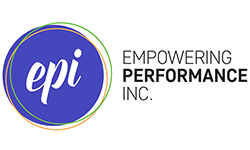The #1 Way to Diffuse Conflict and Engage Difficult People
Who likes to deal with difficult people? Nobody. Who feels completely effective in the face of conflict? Yep. Nobody.
But . . .
What’s the #1 way to diffuse conflict and engage difficult people?
Scale your empathy.
I say this and about 125% of you are thinking, Oh hell no. Empathy? She’s going there? Yes. I’m going there, and I want you to come with me. Just for a sec, okay?
I recently facilitated a micro-session on dealing with difficult people. The session focused on strategies for handling people and situations in the moment. The group came forward with five strategies:
Remain calm.
Display empathy.
Reframe your expectations.
Diffuse conflict.
Delay judgment.
The conversation got really interesting when we started working with empathy.
We talked about the differences between sympathy and empathy, and the group brought forward a powerful insight: Empathy requires knowledge or factual data as context for the situation.
In other words, I can have empathy for you if I can get closer to the raw data about you.
This data also helps me determine if this is actually a conflict or “simply” a misunderstanding. For example, how does my mindset change when I discover you have been late on deadlines because you just lost a team member? How about if I learn you’re having some issues at home, with your health, or that your kid is needing extra support right now?
When I know these things, our conflict is reframed within the realm of our shared humanity, not just our work.
I can give you some room. I can step back from the intensity of my own experience, and we can talk from a place of understanding rather than a default position of blame, frustration, or accusation. From understanding, we can shift into a new, reasonable set of expectations and move toward resolution.
But can I really scale my empathy?
Meaning, if I think of exhibiting empathy on a scale of 1-10, can I exhibit a minimal 1-4 level of empathy in every situation, with every person, regardless of what I know? Can I, at the very least, assume positive intent?
Yes. With intention and practice.
Here’s an example of how to open with a baseline level of empathy:
If I show up with an empathy level of 3, my opening remarks could land on this phrase, “I believe you did not intend to . . .” Then I ask, “How can I help?” or “Do you need anything from me?”
As you engage with me, you invite me to scale:
You say, “I just lost a team member and I have not fully adjusted to the workload.” My empathy immediately rises from a 3 to a 4. Then you may feel safe enough to mention that your work commitments are challenging your relationships at home and you’re struggling to find the right balance. I can totally relate to that, and my empathy scales again. Maybe to a 6 or 7.
By now, I’m in a state of mind that helps me open my body language, even out my tone, and adopt more positive and inclusive words. With my empathy scaled upward, and you responding to it, we can now begin to be solution-oriented.
Here are 5 tips to help you get started:
Start the conversation: Challenge yourself to be vulnerable when you talk to your team and see where they’re willing to meet you.
Be honest: What do you discover in yourself when you ask the above questions? What rewards are you finding? What new challenges are emerging?
Share and share alike: Tell your team (and others) what you’re learning and challenge them to do the same.
Practice, practice, practice: How do you scale empathy in a variety of situations and across all relationships?
Reflect on your values: How can it help you manage difficult situations in a way that serves your personal value system and serves a solution-orientation?

